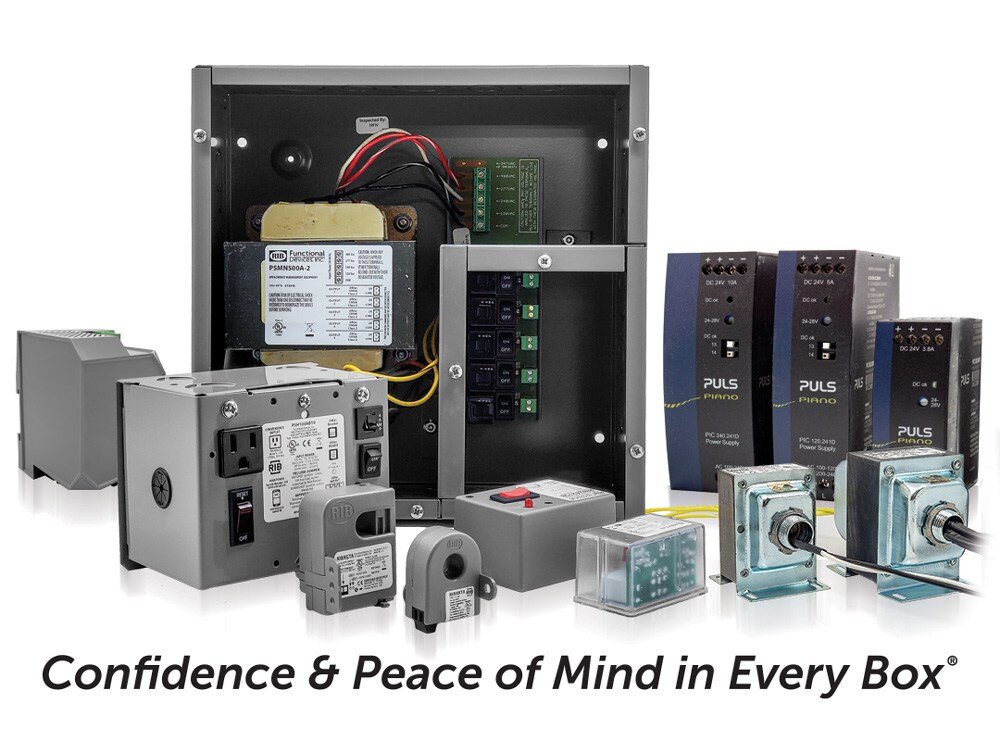Relays & Their Role in Smart Automation Control Systems
How many times per day do you mindlessly turn on and off the light switches in your home? Probably a lot. Similarly, in commercial settings, it’s easy to forget the importance of relays in light of fancy innovations like daylight harvesting and Internet-of-Things (IoT)-enabled devices. However, relays are just as relevant in the age of smart tech as they were when they first entered the scene in 1835.
With smart tech, you need dependable relays, chugging behind the scenes, ensuring the intelligent building automation system (BAS) runs smoothly and efficiently. Let’s explore why relays are still integral to smart control systems and are evolving with changing technology.
Here at Functional Devices, we aim to construct dependable relays that combine the best elements of traditional and modern technologies. Look at our line of products for BAS and lighting control systems.
A Quick Refresher: What Are Relays?
We’ve written about relays on the blog before, which makes sense given our signature “Relay In a Box®” product line. Relays are the industrial equivalent of a light switch in your house, using a small current to switch a large circuit on or off in a building’s various systems.
They’re important because they provide isolation between loads, protecting your building’s sensitive electrical equipment. They can also amplify or downgrade a voltage, meaning each component a relay controls gets the precise amount of energy it needs to run.
The Cloud, IoT, and AI: How BAS Control Systems Are Evolving
Does setting up lighting, HVAC schedules, and maintenance sound familiar? With a conventional BAS, the capabilities only go so far. Although a BAS makes operating a building’s systems much easier than if there weren’t one, a facility manager still has to manage much of the work manually, including scheduling, maintenance, and monitoring.
With cloud connectivity, IoT, and AI-driven analytics, the modern BAS gets a smart makeover. Now, as part of an integrated and dynamic ecosystem, an intelligent BAS can collect and respond to real-time data, allowing for:
- Lower energy consumption and costs
- Remote monitoring and control
- Personalized experiences
- Predictive maintenance
- Maximized efficiency and time
What truly sets a smart BAS apart from a conventional BAS is its ability to collect real-time data and respond automatically.
For example, perhaps you’ve had a hotter summer than usual, and your AC is working hard. A smart BAS can perform on-board diagnostics of your HVAC system, automatically ordering replacement parts or changing the maintenance schedule in response to the increased operating demands.
Relays in the Age of Smart Tech
So, what do relays have to do with a BAS’s smart makeover? Well, you still need an electrical switch to turn all that smart tech on and off! Like the rest of the devices in a BAS, relays simply become part of that connected and intelligent ecosystem, humbly working in the background so that smart tech can shine.
Even smart systems rely on hardware like relays, sensors, actuators, and controllers. Relays aren’t going anywhere, and that’s because of their essential features.

Relays are facilitators that help integrate diverse systems in a web of smart automation. However, like other components in a conventional BAS, today’s relays have evolved to serve their purpose better in a smart ecosystem.
Adapting to the Smart Tech Era of IoT-Enabled Devices
Today’s relays are anything but basic. Of course, they still perform the basic function of switching power on and off, but that’s not all. Now, they sport sophisticated features that better facilitate intelligent communication between systems.
Engineers are adapting relays to smart tech in different ways. For example, today’s relays:
- Combine traditional functionality with digital monitoring and diagnostics
- Support remote configuration and control for easier and safer management, flexibility, efficiency, and reduced maintenance costs
- Integrate with various network protocols, like Modbus, Ethernet/IP, BACNet over IP, and EnOcean
- Offer higher accuracy and more energy efficiency
As you can see, relays have come a long way from what they were in the 1830s!
A Solid Relationship with Functional Devices
Even with the advent of smart tech, relays are essential in commercial and industrial buildings. A foundational component of both conventional and smart BAS, modern relays have adapted to better complement and support intelligent infrastructure with integrated smart capabilities, remote configuration and control, and accuracy and efficiency advancements.
Functional Devices aims to stay at the forefront of evolving technology, refining our designs and releasing new products to better assist our customers in transforming their BAS from conventional to smart. As we mentioned earlier, our signature “Relay In a Box®” leads the way in our innovation efforts, coming pre-assembled for easy installation and improved efficiency.
Discover more about our product offerings and feel free to reach out with any questions. Our engineers would be happy to discuss your needs.
About Functional Devices, Inc.

Leaders in the Industry
The world was a very different place in 1969, when Functional Devices, Inc. was founded by engineer and electronics enthusiast Albert Rittmann, but our commitment to evolution and versatility has allowed us to remain a key player in the building automation and lighting controls industry for over 55 years.
Today, as we embrace emerging technology and lean into the future of building automation, our products are still manufactured in the USA with global materials, and we are still committed to our mission of enhancing lives in buildings and beyond. Back in 1969, Albert could never have predicted the technological advances we live with today, but with the groundwork he laid and the vision of his successors, Functional Devices has adapted and grown into a company that can handle anything.
